Courtesy of Jesse Orrico[/caption] TL;DR: wanna be a better photographer? The simple answer is: shoot every single day, study the work of other photographers, and try your darndest to find something new to say in your work. The other, slightly more complicated answer is: everyone has and should have a different approach to improving their photography. What’s good for the goose is good for the you-know-what. So we asked six very different photography curators on Flipboard—Shutterstock Director of Content/LPV Show Host Bryan Formhals; freelance lifestyle and travel photographer Laura Austin; The Phoblographer Editor-in-Chief Chris Gampat; Eric Kim of Eric Kim Photography; freelance photographer Yasin Osman and Squarespace’s Eric E. Anderson—to answer six specific questions on the subject of style, gear and favorite sources, sharing their philosophies on photography in the process. Whether you follow their tips to the T or ignore them altogether, consider these interviews a way to see a range of photographic opinions, side by side. What’s one piece of advice you’d give to any photographer struggling to find their style? Bryan Formhals: Edit and then edit some more. Print out a collection of photos, tape them to your wall, and then start to take down the photos that stick out to you. After a few weeks, you should have a strong set of images that resonate with you. Go from there. Laura Austin: Style is about authenticity. My style comes from what I am attracted to internally, not by me trying to copy what other people are doing. I feel like if you are authentic to what you are attracted to, a style will naturally develop over time. Chris Gampat: Well, first off, I really recommend that any photographer who’s into the art form is genuinely into the art form. Folks say that they’re into photography, but they haven’t taken a look at what true artistic photography is or they just like to spend time looking at MTF charts, pixel peeping, etc. Those people are generally not into the art side and are just looking to shoot for no other purpose than for themselves; and I guess that’s fine but I wouldn’t call those people photographers in the artistic sense. I interview photographers on a daily basis and everyone who really got into it for the artistic side of the medium was into the pure content of the photos to begin with. So with that said, I want to honestly equate it to the laws of attraction as it pertains to personal relationships: you’ll know it when it happens. You can’t force attraction at all. The way your brain is wired will naturally draw you towards one thing vs the other. Eric Kim: To find your style in photography is to find who you are as a human being. What interests you in life? For me, I was always drawn to people. I’m naturally extroverted, and I like to interact with my subjects when I photograph them— helping me discover “street portraits” as (one of) my styles.
Ultimately, your personality changes and evolves over the year, and so will your style.I would also define ‘style’ as two things: 1) What you photograph and 2) What your photos look like. For the first point, decide to work on a photography project and stay committed to it for a period of time. Secondly, stick with one camera, one lens, and one type of post-processing to have consistency. Yasin Osman: Shoot for yourself and never for others. Shoot what makes you happy, not what you think may seem popular. When it comes to finding your style, my biggest advice would be to shoot every day. It’s difficult to figure out what you like let alone what your style is if you’re doing it once every two weeks. All the great photographers worked on perfecting their craft every single day. That’s why it’s also important to have a camera on you all the time. Eric Anderson: Finding your style comes with a lot of practice and being true to yourself. The most important thing is to shoot what interests you. Take shots from as many angles and points of view as you can— shoot wide, close and everything in-between. Keep the images you like and delete the ones you don’t. After a while, your style will emerge. [caption id="" align="alignnone" width="907"]
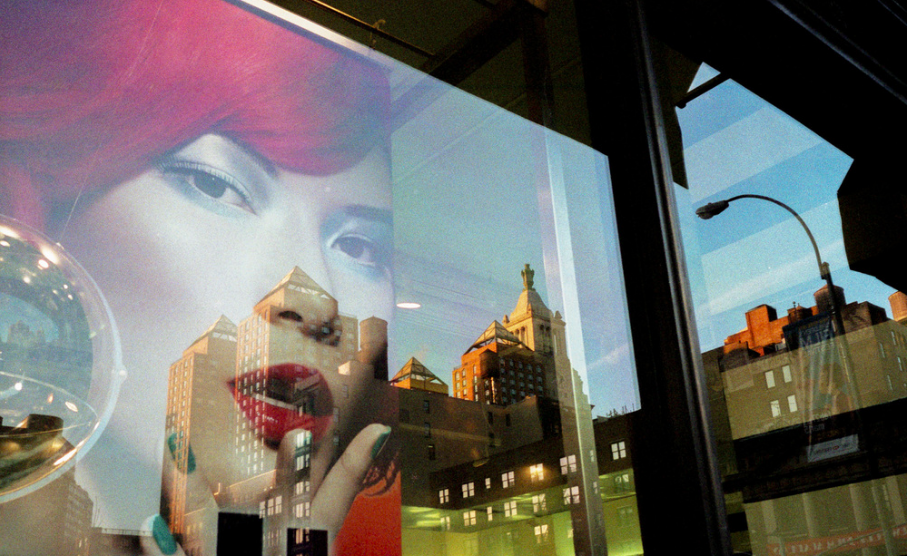 Courtesy of Bryan Formhals[/caption]
How important is gear? Why or why not? What do you use and why?
EA: The type of gear you use is not important at all. What’s important is that you use the gear you have the best way you can. After all, the gear doesn’t make the photograph, you do. I use a 5-year-old mid-priced micro four thirds camera from Panasonic. It’s not advanced, it’s not expensive, but it is small and lightweight which is important to me.
BF: The gear matters; the gear doesn’t matter. It depends on what you’re trying to accomplish. But I’ve never believed that it doesn’t matter at all. Find the right gear and technique to fit what you’re trying to accomplish conceptually or narratively.
YO: Gear isn’t important, shooting is! That doesn’t mean I don’t drool over the latest glass just like everyone else; it just means I’m more interested in trying to capture great images.
I shoot with a Canon 6D, a 50mm 1.4 lens and a 24-70 2.8 II lens, a Fuji x100t and a Canon AE1-Program. My favorite lens to shoot with is my Fuji. It has a 23mm f2 fixed lens, but because of the crop sensor it’s about 35mm—a very versatile focal length. If I were to have just one lens and one lens only, it would be a 35mm. When I was in Saudi Arabia shooting the Hajj for VICE, every single shot was done with my Fuji x100t.
Courtesy of Bryan Formhals[/caption]
How important is gear? Why or why not? What do you use and why?
EA: The type of gear you use is not important at all. What’s important is that you use the gear you have the best way you can. After all, the gear doesn’t make the photograph, you do. I use a 5-year-old mid-priced micro four thirds camera from Panasonic. It’s not advanced, it’s not expensive, but it is small and lightweight which is important to me.
BF: The gear matters; the gear doesn’t matter. It depends on what you’re trying to accomplish. But I’ve never believed that it doesn’t matter at all. Find the right gear and technique to fit what you’re trying to accomplish conceptually or narratively.
YO: Gear isn’t important, shooting is! That doesn’t mean I don’t drool over the latest glass just like everyone else; it just means I’m more interested in trying to capture great images.
I shoot with a Canon 6D, a 50mm 1.4 lens and a 24-70 2.8 II lens, a Fuji x100t and a Canon AE1-Program. My favorite lens to shoot with is my Fuji. It has a 23mm f2 fixed lens, but because of the crop sensor it’s about 35mm—a very versatile focal length. If I were to have just one lens and one lens only, it would be a 35mm. When I was in Saudi Arabia shooting the Hajj for VICE, every single shot was done with my Fuji x100t.
I’m a firm believer that you can take beautiful images with almost anything you have.CG: This is pretty debatable. In the grand scheme of photography, it really, really doesn’t matter. I mean the idea of shooting a wedding with a pinhole camera could be a cool one if you can pitch the idea effectively to someone and you have the work to honestly back it up. How do I figure this? I get all the latest lenses, lights and cameras in for review. They all have the potential to create the same images. They all feel different though and offer slightly different experiences. So with that said, I use whatever’s around. I used to have emotional attachment to cameras because they helped me build my business but these days I honestly don’t. I’ve done great work with an iPhone, a 6D, a Micro 43 camera with a pinhole lens on it, film etc. The importance is to have creative vision and to just work with it. You just need to realize the strengths of each and utilize them accordingly. LA: Gear is important in that you can’t shoot photos without it. But I don’t think anyone should ever think “If only I could get this camera then I will shoot better photos.” I’d like to think it is more the user than the tool. I have a Canon 5D Mark III. It’s a powerful enough tool to handle everything I need. EK: Gear is important—but up to a certain degree. Of course if you are photographing birds, a 500mm lens might be preferable over an iPhone. However, the problem is that we often think that our failings for our photography skills and projects is because of our gear (not ourselves). I find in street photography, the ideal camera is one that is small, compact and unobtrusive. For this, I currently prefer a digital Ricoh GR II camera. It always is in my backpack, and I photograph it in “P” mode not to miss the ‘decisive moment.’ [caption id="" align="alignnone" width="790"]
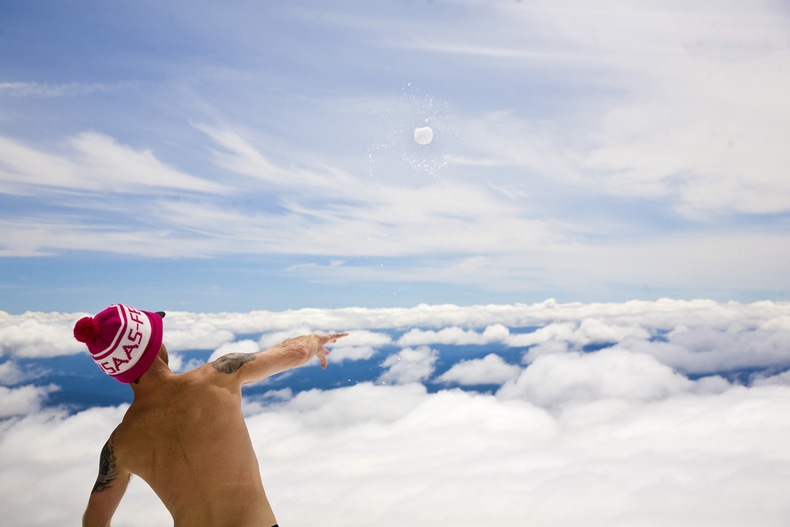 Courtesy of Laura Austin[/caption]
What are some of your favorite photography-related websites and/or Flipboard magazines/topics?
YO: TIME’s Lightbox, The New York Times’ Lens Blog and stevemccurry.com, of course. As for topics: street photography, photojournalism, and astrophotography.
I admire all types of photography. I find myself spending hours on Flipboard going through macro, fashion, wildlife, landscape and sports photography.
EA: That’s an easy one! Mirrorless on Flipboard. It’s the magazine I make for myself. And topics? Anything having to do with digital photography, really. I follow nearly 100 different topics and sources to be sure I won’t miss something interesting to share.
BF: Feature Shoot, Petapixel, Blake Andrews Blog, NYT Lens Blog, TIME’s Lightbox, Aperture, Foam. I follow the photography and photographers topics on Flipboard, which surface articles I would not have seen otherwise.
EK: I frequent my friend’s photography blog quite often (jtinseoul.wordpress.com) where he shares his soul through his images and words.
CG: I really dig Mobile Photography Awards, Mirrorless, a couple of the street photography magazines and some of the iPhoneography ones. I really wish that there were more curators just doing artsy stuff in the photo world. We need more of that.
[caption id="" align="alignnone" width="662"]
Courtesy of Laura Austin[/caption]
What are some of your favorite photography-related websites and/or Flipboard magazines/topics?
YO: TIME’s Lightbox, The New York Times’ Lens Blog and stevemccurry.com, of course. As for topics: street photography, photojournalism, and astrophotography.
I admire all types of photography. I find myself spending hours on Flipboard going through macro, fashion, wildlife, landscape and sports photography.
EA: That’s an easy one! Mirrorless on Flipboard. It’s the magazine I make for myself. And topics? Anything having to do with digital photography, really. I follow nearly 100 different topics and sources to be sure I won’t miss something interesting to share.
BF: Feature Shoot, Petapixel, Blake Andrews Blog, NYT Lens Blog, TIME’s Lightbox, Aperture, Foam. I follow the photography and photographers topics on Flipboard, which surface articles I would not have seen otherwise.
EK: I frequent my friend’s photography blog quite often (jtinseoul.wordpress.com) where he shares his soul through his images and words.
CG: I really dig Mobile Photography Awards, Mirrorless, a couple of the street photography magazines and some of the iPhoneography ones. I really wish that there were more curators just doing artsy stuff in the photo world. We need more of that.
[caption id="" align="alignnone" width="662"]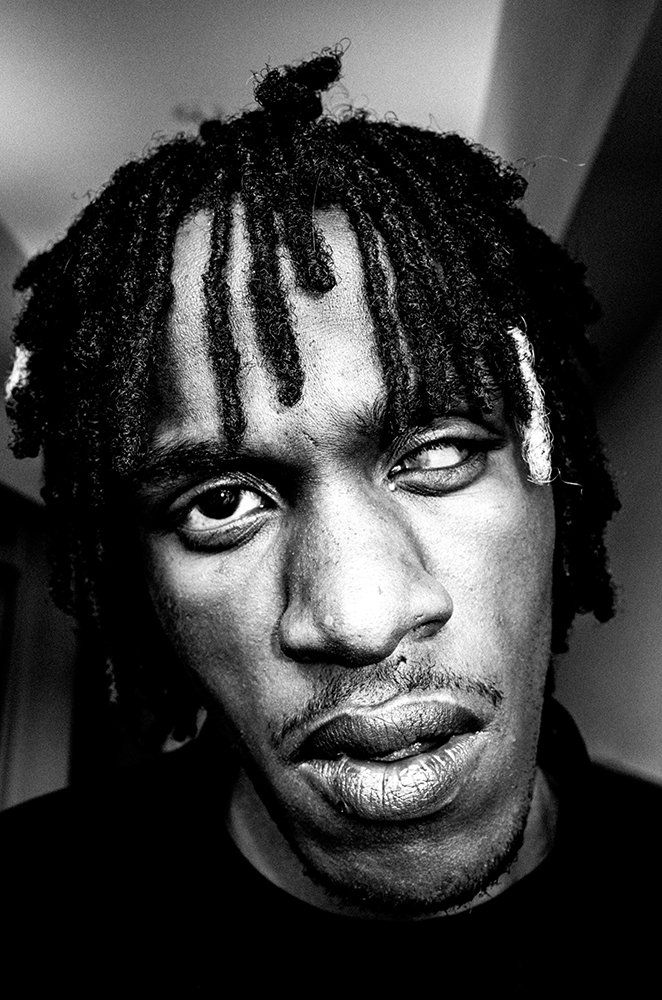 Courtesy of Eric Kim[/caption]
How can photographers get their work seen?
BF: This depends on what you’re trying to achieve. Legit portfolio reviews can get your work in front of tastemakers and top editors. Submitting to popular blogs will often do the trick. Or you can hustle and build your own social media presence.
Courtesy of Eric Kim[/caption]
How can photographers get their work seen?
BF: This depends on what you’re trying to achieve. Legit portfolio reviews can get your work in front of tastemakers and top editors. Submitting to popular blogs will often do the trick. Or you can hustle and build your own social media presence.
What’s most important is finding a small group of people who believe in your work.LA: Social media remains a powerful tool. I believe if you are making good work and put it out there, people will notice. A blog is also a great way to get your work out there. EA: First, share your work in a well-thought-out portfolio, only showing your best work. It’s important that you be ruthless in editing the contents of your portfolio—never show mediocre images. Second, blog about your process: what you’re shooting, where you shot it and what you may have learned along the way. People will share insightful and useful content with others. YO: It’s much easier now. Years ago Flickr used to be one of the most popular photography websites for sharing your work. But now there’s tons of social media outlets. There’s Instagram, Pinterest, Tumblr and my recent favorite, 500px. As long as you consistently push out quality work, your photo will be recognized. EK: I feel one of the best ways to get your work seen is to share the work of others. For me, building a blog and profiling other photographers has eventually brought more eyeballs to my work. CG: The most common answer to this is to throw it up on InstaFaceChatTwitPx. I was chatting about this with Tony Gale just this morning, and he’s told me about how he knows some folks who have lots gigs because they have under 10K Instagram followers. Well, if we live in a world like that, what folks need to realize is that the art world of photography is all about who you know more than what you know. You have to make personalized introductions letters to all those curatorial gatekeepers that have larger followings who can then spread your work. It’s not at all nonsense. Think about it this way: if I let anyone and everyone post their images and interviews on the Phoblographer, my business never would have grown. I need to be a filter to showcase only the best stuff because it helps my business. And when these people put their best foot forward to start, then they get featured. So in all honesty, I tell everyone to just make connections and plan out who you want to talk to. Buy an editor coffee. Go photowalking or gallery hopping with them, etc. [caption id="" align="alignnone" width="750"]
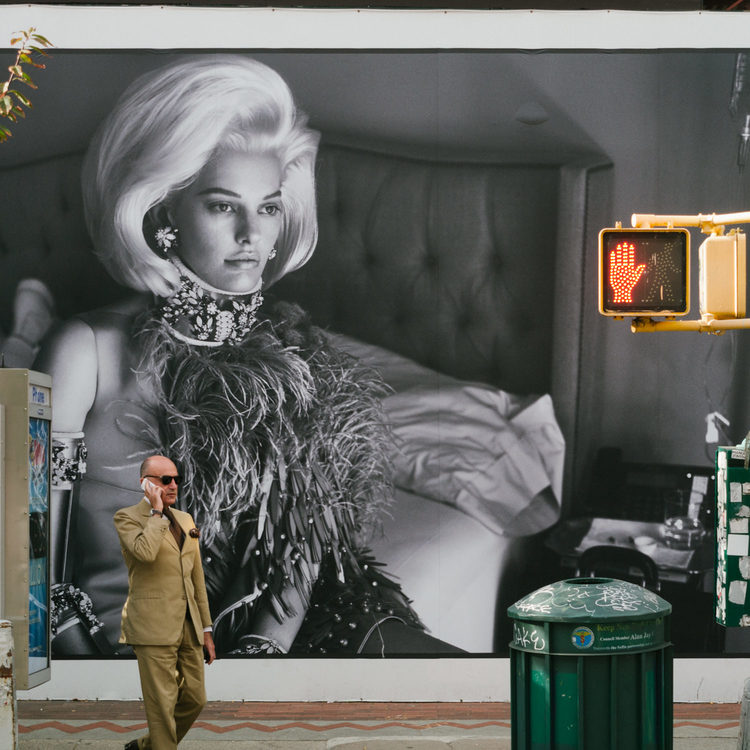 Courtesy of Eric E. Anderson[/caption]
What are some photographic clichés to avoid?
LA: Selfies. 😉
EA:
Courtesy of Eric E. Anderson[/caption]
What are some photographic clichés to avoid?
LA: Selfies. 😉
EA:
Never avoid shooting anything you enjoy and ignore anyone that says you should. There is no such thing as a “photographic cliché.” Do your thing and forget the rest.YO: A lot of people assume you need to book a ticket to a foreign destination to get great shots. But an inexpensive alternative is to travel in your own city! You can go to a park, buy a metro pass, check out a new restaurant, explore areas of your city you’ve never been to. We are so used to our surroundings that we forget there’s someone else who isn’t. That boring building you lived in for the last 20 years might be fascinating to someone who might’ve grown up on the other side of the city or even the other side of the world. There’s beauty in everything; you just have to look at things as if you’re looking at it for the first time. BF: I wouldn’t be concerned with clichés. They are everywhere. Instead focus on editing and finding your style, but most importantly have a reason for making the photographs in the first place and think about that reason every day. EK: I don’t think photographic clichés are necessarily bad—I think much worse is to constantly repeat what you do over and over again, without changing, evolving and driving your art forward. CG: There honestly are none. If you can make it work, then make it work for you. What matters in the end is success and you should never put a limitation on yourself. [caption id="" align="alignnone" width="894"]
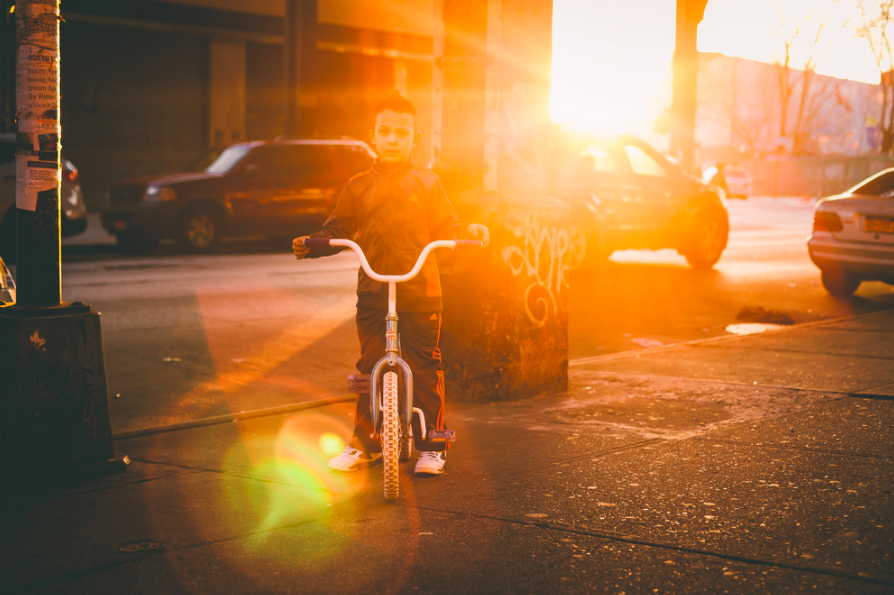 Courtesy of Yasin Osman[/caption]
~ShonaS is curating Proof of Experience
Courtesy of Yasin Osman[/caption]
~ShonaS is curating Proof of Experience

